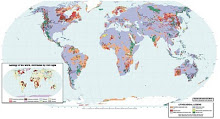Am J Epidemiol. 2011 Feb 15;173(4):414-20. Epub 2010 Dec 29.
Smith AH, Marshall G, Yuan Y, Liaw J, Ferreccio C, Steinmaus C.
Abstract
Arsenic in drinking water causes increased mortality from several cancers, ischemic heart disease, bronchiectasis, and other diseases. This paper presents the first evidence relating arsenic exposure to pulmonary tuberculosis, by estimating mortality rate ratios for Region II of Chile compared with Region V for the years 1958-2000. The authors compared mortality rate ratios with time patterns of arsenic exposure, which increased abruptly in 1958 in Region II and then declined starting in 1971. Tuberculosis mortality rate ratios in men started increasing in 1968, 10 years after high arsenic exposure commenced. The peak male 5-year mortality rate ratio occurred during 1982-1986 (rate ratio = 2.1, 95% confidence interval: 1.7, 2.6; P < 0.001) and subsequently declined. Mortality rates in women were also elevated but with fewer excess pulmonary tuberculosis deaths (359 among men and 95 among women). The clear rise and fall of tuberculosis mortality rate ratios in men following high arsenic exposure are consistent with a causal relation. The findings are biologically plausible in view of evidence that arsenic is an immunosuppressant and also a cause of chronic lung disease. Finding weaker associations in women is unsurprising, because this is true of most arsenic-caused health effects. Confirmatory evidence is needed from other arsenic-exposed populations.
Thursday, February 17, 2011
Subscribe to:
Post Comments (Atom)




No comments:
Post a Comment